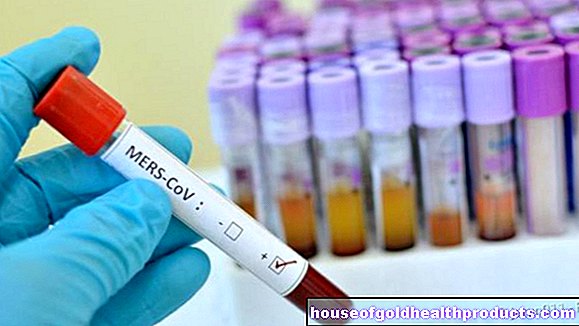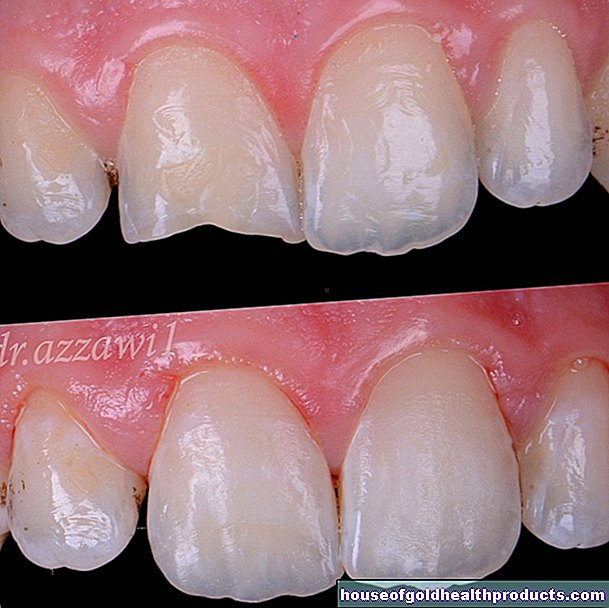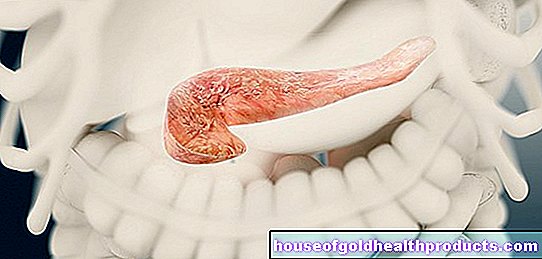Urography
All content is checked by medical journalists.Urography is the name given to the x-ray examination of the lower urinary tract. To do this, the doctor uses a contrast medium that makes the anatomical structures easier to see. The recording made during urography is called a urogram. Read everything about urography, how it works and the risks it carries.

What is a urography?
In urography, the doctor uses an X-ray examination to visualize the lower urinary tract. These include:
- Renal pelvis
- Ureter
- bladder
- Urethra
The kidneys and ureters are called the upper urinary tract, and the bladder and urethra are called the lower urinary tract. These organs cannot be seen in a normal x-ray. To do this, the doctor needs a so-called contrast medium, which he gives the patient either directly via the urinary tract or via a vein.
If only the kidneys are examined during the examination, it is a so-called pyelography.
Retrograde urography
In retrograde urography, the contrast medium is introduced directly into the urethra via a thin tube and from there spreads to the rest of the urinary system. To view the urethra and bladder, the doctor uses a cystoscope, a special instrument with a camera that he inserts into the urethra.
Excretory urography
In excretory urography, the doctor does not give the patient the contrast agent directly through the urinary tract, but instead injects it into a vein. This is why this examination is also known as IV urography (intravenous urography). The kidney filters the contrast medium from the blood and excretes it through the urinary tract. The doctor can assess this process in the X-ray.
When do you perform a urography?
Urography is used to diagnose the following clinical pictures:
- Kidney stones
- Cancers of the lower urinary tract
- Narrowing (stenosis) of the kidneys or urinary tract
- Injuries to the renal pelvis
- Congenital malformations of the urinary tract
In addition, with these clinical pictures, the course and success of the selected treatment can be checked in the urogram by means of urography (follow-up control).
Caution is advised in patients with a known contrast medium intolerance: As these tend to have serious side effects, the doctor must carefully weigh up whether the benefits of the examination outweigh the risks.
What do you do with a urography?
The evening before the urography, the patient is prepared: so that no intestinal gases or intestinal contents falsify the X-ray, the patient is not allowed to eat anything the evening before. He is also given laxative and bleeding drugs. Immediately before the urography, the patient should empty his bladder again.
Retrograde urography
Before urography, the doctor usually gives the patient a light sedative and an analgesic drug. The patient is then placed on his back with his legs slightly bent and spread outwards, disinfected and covered with a sterile cloth.
The doctor uses a syringe to inject a local anesthetic lubricant into the urethra so that it is easier for him to insert the cystoscope and assess the urethra and bladder. The contrast agent introduced is now distributed from the urethra into the rest of the urinary tract and the X-ray images are made.
Excretory urography
Before the actual IV urogram, the radiologist takes a so-called blank exposure for comparison, i.e. an image without contrast agent. A contrast agent is administered to the patient via a venous access and spreads through the blood vessels into the kidneys. After a few minutes, the doctor will take another picture to assess the upper urinary tract. About a quarter of an hour after the administration of the contrast medium, the third picture is taken, in which one can see the spread of the contrast medium in the ureter and bladder. The entire examination usually takes about half an hour.
What are the risks of urography?
As with many invasive diagnostic measures, urography also involves certain risks, about which the doctor informs the patient in advance. Possible complications are injuries to the urethra, the bladder, the ureter or the kidney, which can be caused either by the instruments or - in retrograde urography - by pressure of the contrast medium.
In addition, there are certain risks associated with the use of X-ray contrast media. The substances used today are considered very safe and routinely used, but in rare cases complications can occur. These range from slight intolerance reactions to severe general reactions to cardiovascular arrest. The use of contrast media containing iodine can also lead to severe overactive thyroid gland. The patient is carefully observed during the examination so that such reactions can be recognized in good time and treated immediately.
What do I have to consider after a urography?
After urography, you should drink enough water or tea. In this way you support your kidneys in eliminating the contrast medium that remains in the body.
If necessary, the doctor will prescribe an antibiotic for you. It is designed to prevent germs that may have entered the urethra with the cystoscope from spreading and causing ascending urinary tract infections.
Depending on the findings of the urography, the doctor will then discuss further therapy with you.
Tags: eyes Baby Child alcohol drugs





-mit-mickymaus-am-tannenbaum.jpg)























